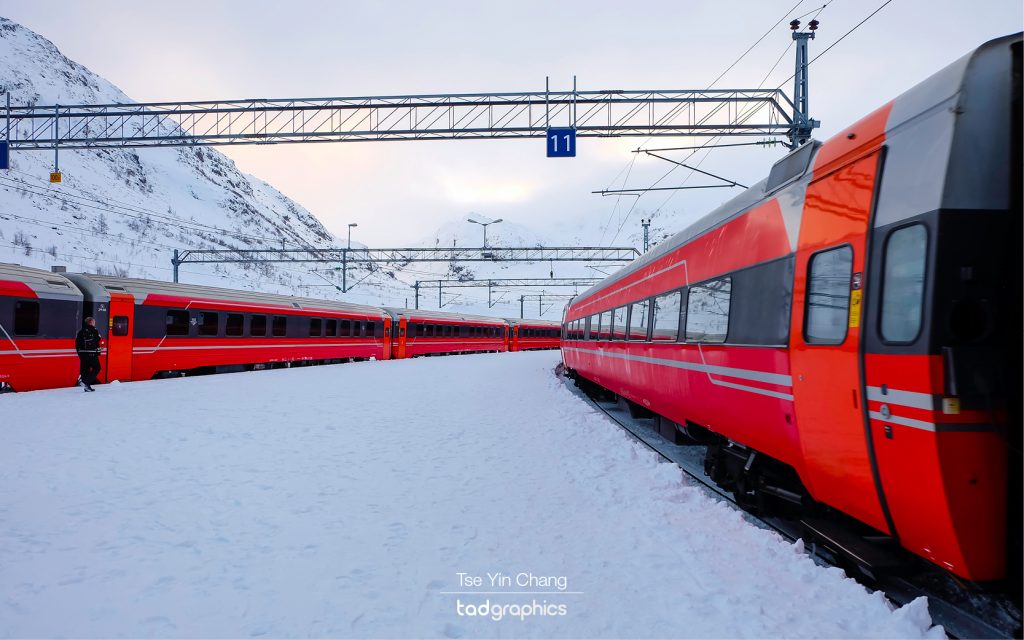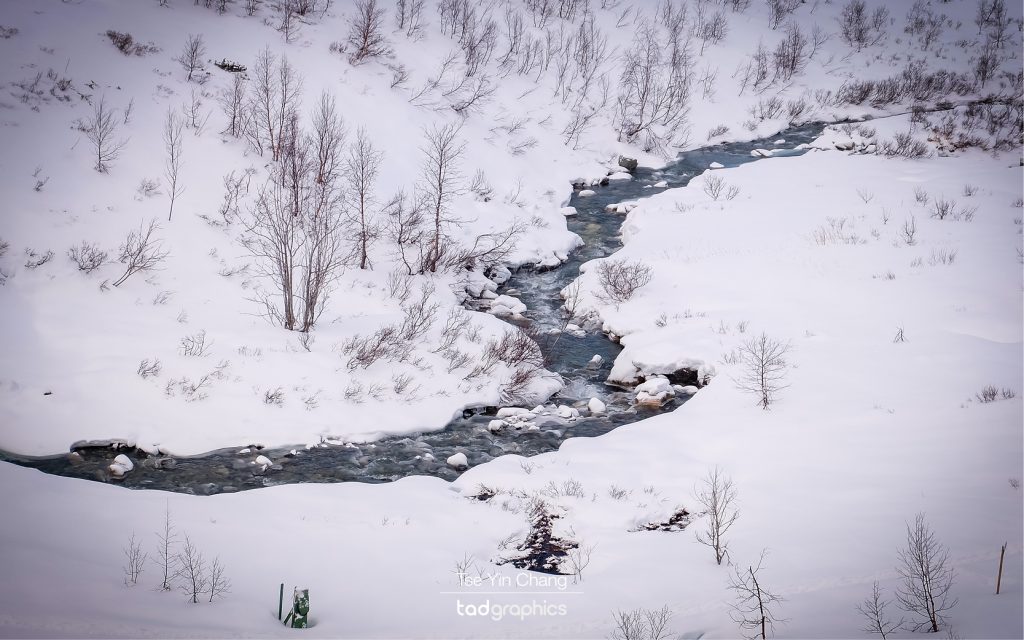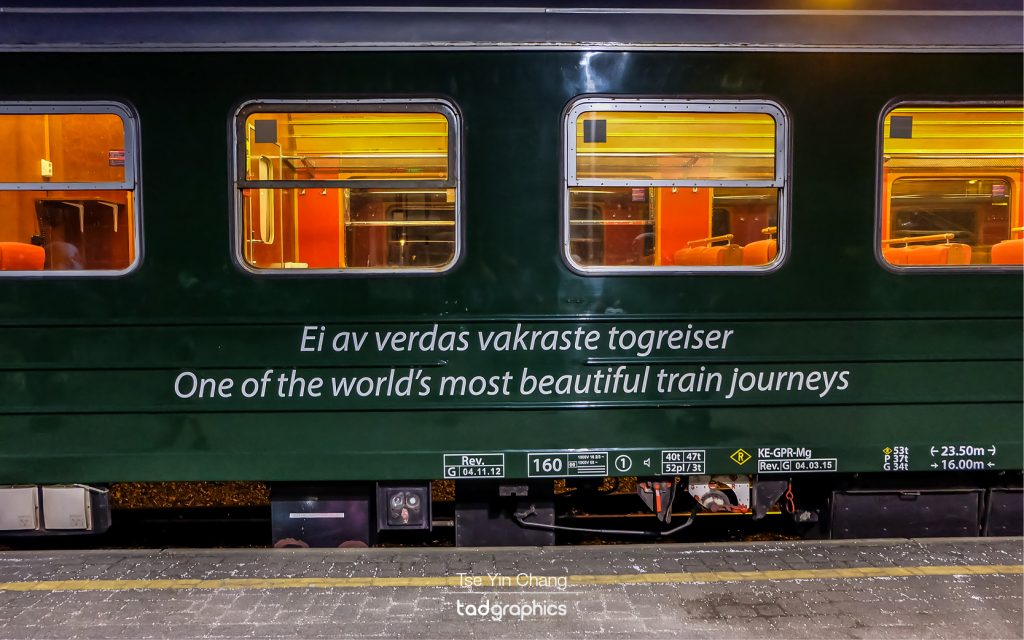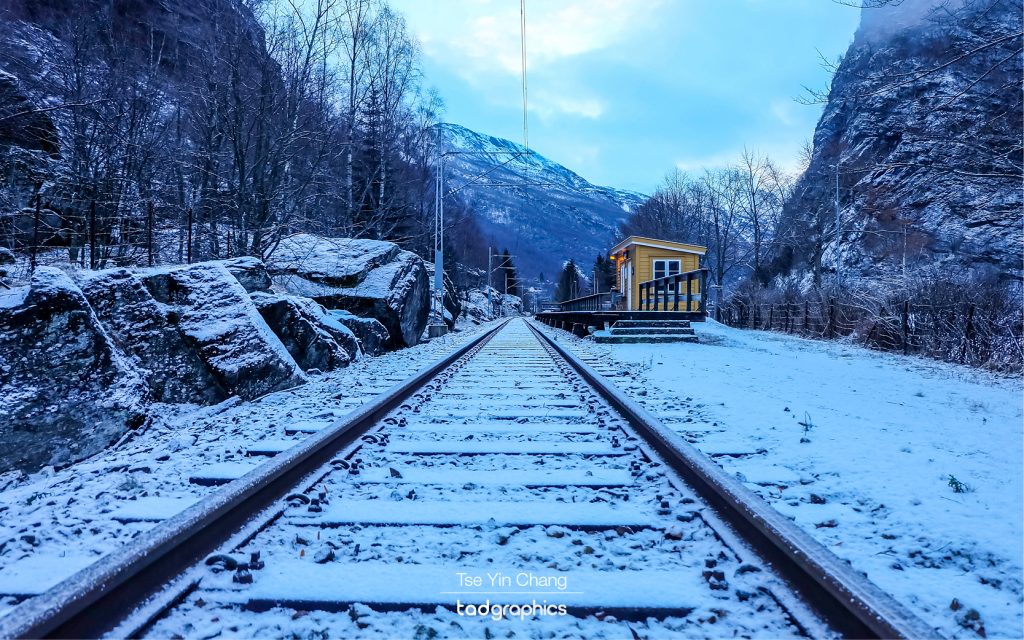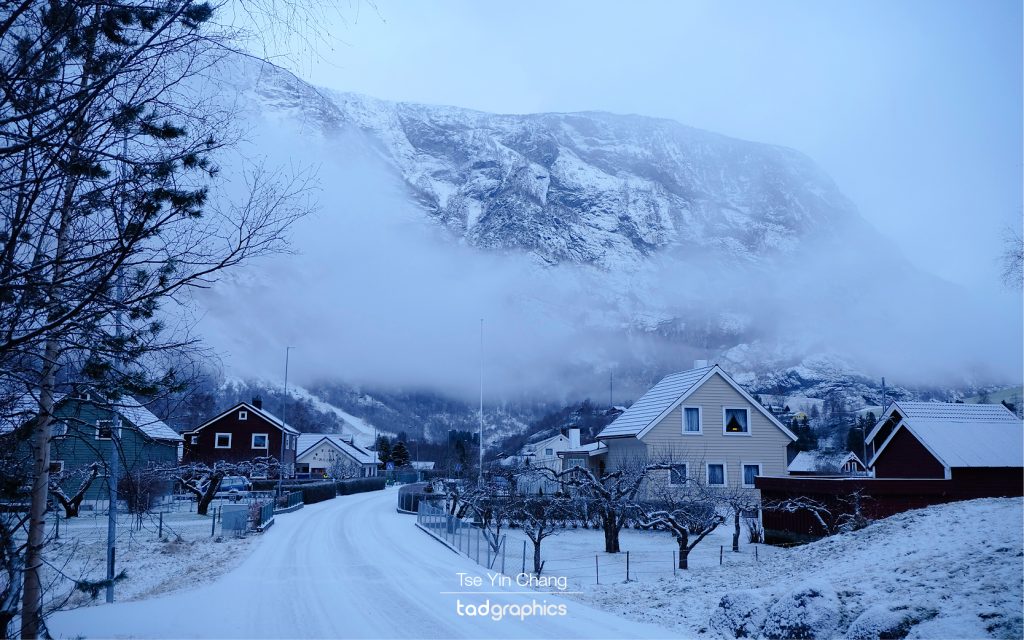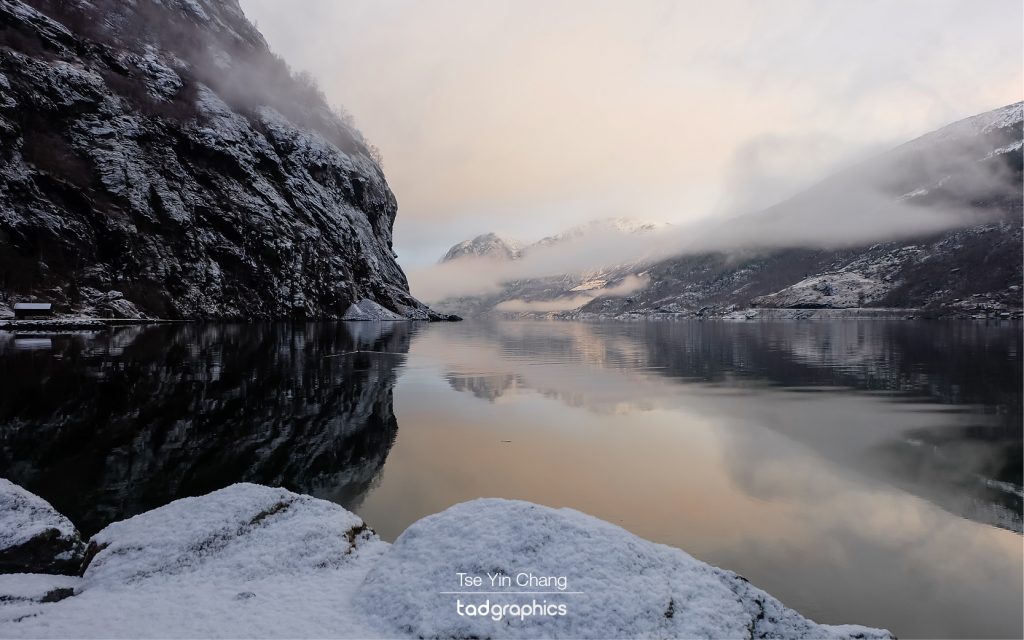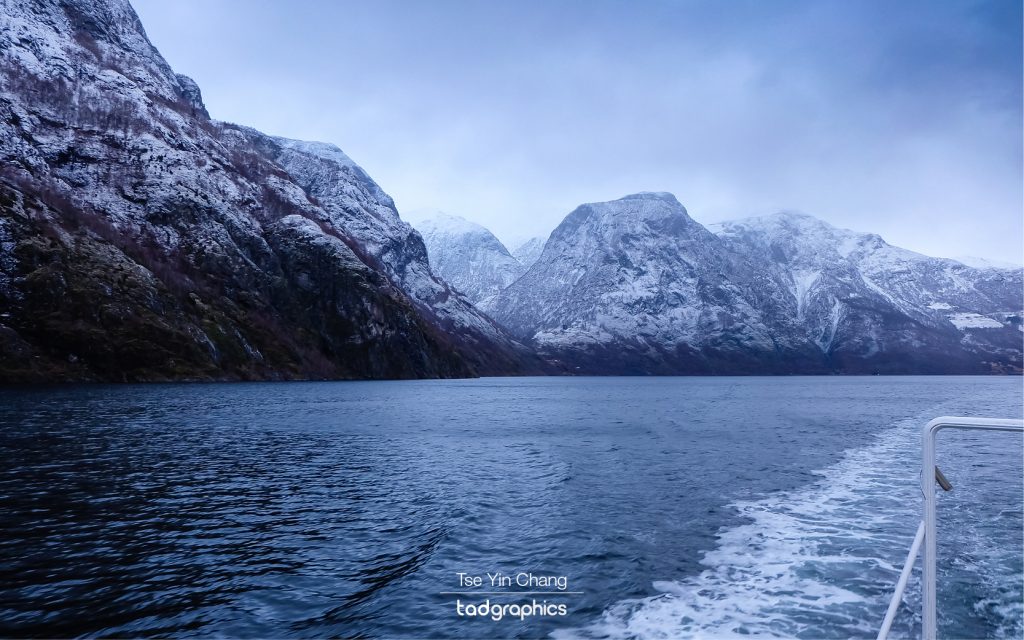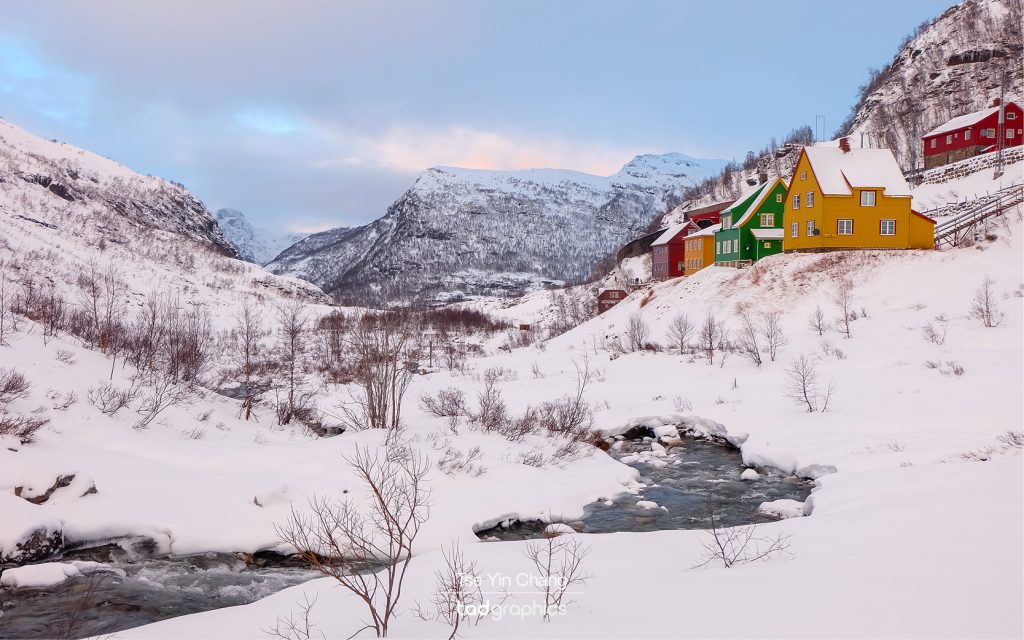
Think about Norway, and most likely it’s the country’s beautiful mountains and fjords that comes to mind. Most people visit Norway to see the fairy-tale landscapes, and yes, we were no different to other tourists in that respect.
We had just spent an enjoyable couple of days in Oslo, soaking up the atmosphere of Norway’s fascinating capital. Without question, seeing the history of the country embodied in the old buildings, and getting the full New Year’s experience surrounded by people in such a special place was truly unforgettable. But now we were eager to see and explore some of Norway’s famous natural attractions.
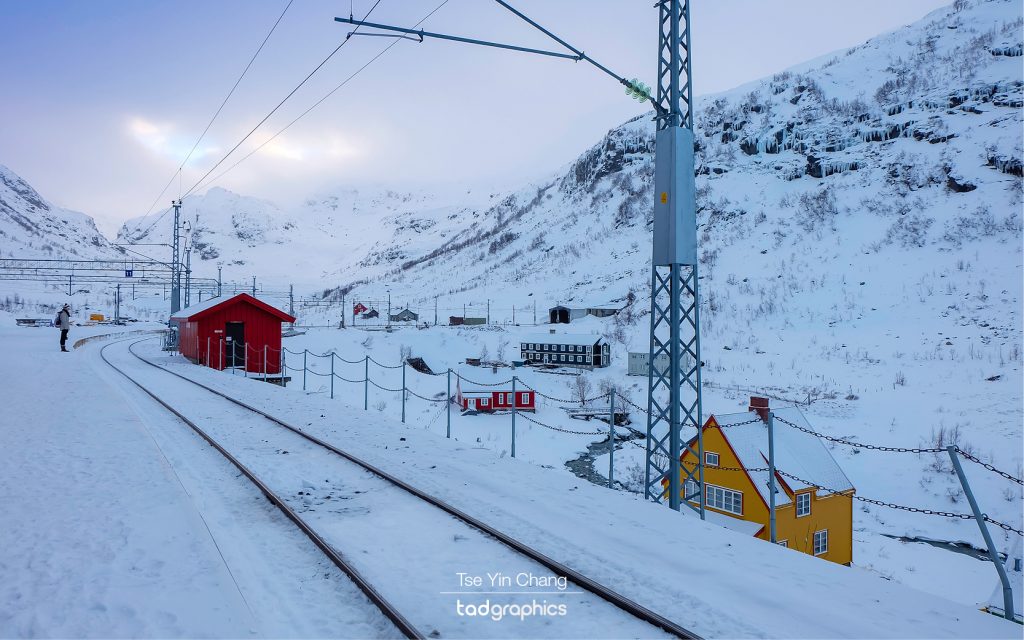
The day of adventure started out with a train delay. Not ideal, because when visiting at this time of year, one has to make the most of the daylight hours. But we didn’t let that dampen our spirits. Albeit an hour late, we eventually boarded the Bergensbanen train and by 9.30 am we were on our way.
The Bergensbanen serves an important practical purpose – linking Oslo to the country’s second city of Bergen over the mountainous rooftops of Norway. It is also a very popular method of transport amongst tourists, because the train journey provides an ideal opportunity to enjoy some of the country’s spectacular natural features. While both ends of the line sit at sea level, to get between them the train must ascend more than 1,000 meters over the mountains.

The Bergensbanen is not only the highest train line in Europe, and is said to be one of the best rail routes in the world. As we climbed along Europe’s highest mountain plateaus, the views became more and more beautiful, with the very best section nestled between the villages of Gol and Geilo. Winter felt like the best time to experience Norway, as the blanket of snow made it feel more authentically Norwegian, and added a layer of photogenic charm.
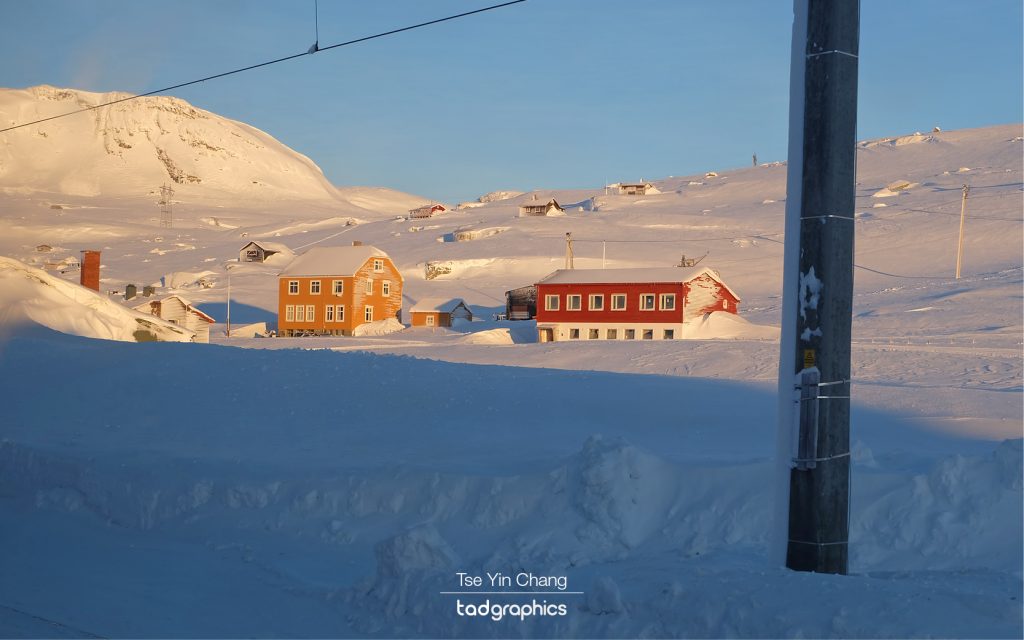
Close to the route’s highest point, another smaller train line cuts off, which allows you to enjoy even more of the otherworldly landscapes. We took a detour from Myrdal to Flåm on board Flåmsbana (also known as Flåm Railway). While waiting for our train to Flåm, we managed to explore the snowy hillside on foot. Fortunately, we were wearing appropriate footwear!
Voted one of the world’s most beautiful train journeys, the Flåm Railway offers panoramic views of some of the wildest and most magnificent nature in the Norwegian fjord landscape. The 20.2 km railway, which took 20 years to complete, is one of the steepest train lines in the world. The journey passes through 20 tunnels, of which 18 were built by hand. While the original intent of the train is to help locals get around, the spectacular scenery meant that it is now largely used by tourists like us.
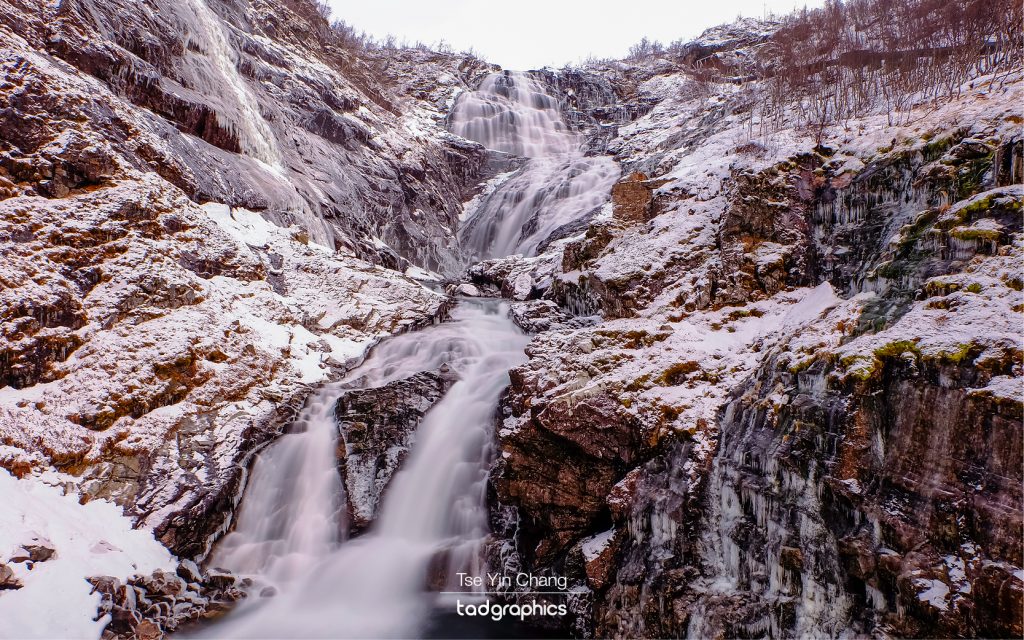
Unfortunately, it was here that the earlier delay leaving Oslo cost us. When you are this far north the sun sets early in mid-winter, and by the time we boarded the Flåm Railway at 3 pm the sun had already set. It meant we didn’t get the clear views we hoped for as there was very little light outside.
The train made a short stop at Kjosfossen Waterfall, which was a highlight of the train ride. With a fall of 225 metres, it is one of the most visited tourist attractions in Norway. If you visit, you’ll notice a small power station, built at the side of the waterfall, which used to power the Flåm Railway.

Despite the fading light issues, the train journey – which took us on a 900 metres descent along the valley bottom – was a delightful experience from beginning to end. From inside the train we had a first hand view of rivers cut through deep ravines, waterfalls cascading down the side of steep, snow-capped mountains, and mountain farms clinging dizzily to sheer slopes. It was all quite a sight to behold.
Flåm was by far one of the most magical places we visited during our Norway trip. Flåm means ‘little place between steep mountains’ and it is certainly an accurate name. Running parallel to the train track is a small river which turns into the Aurlandsfjord when it reaches the village. After spending a night at the Flamsbrygga Hotel, the fjord was the next attraction to tick off our list.
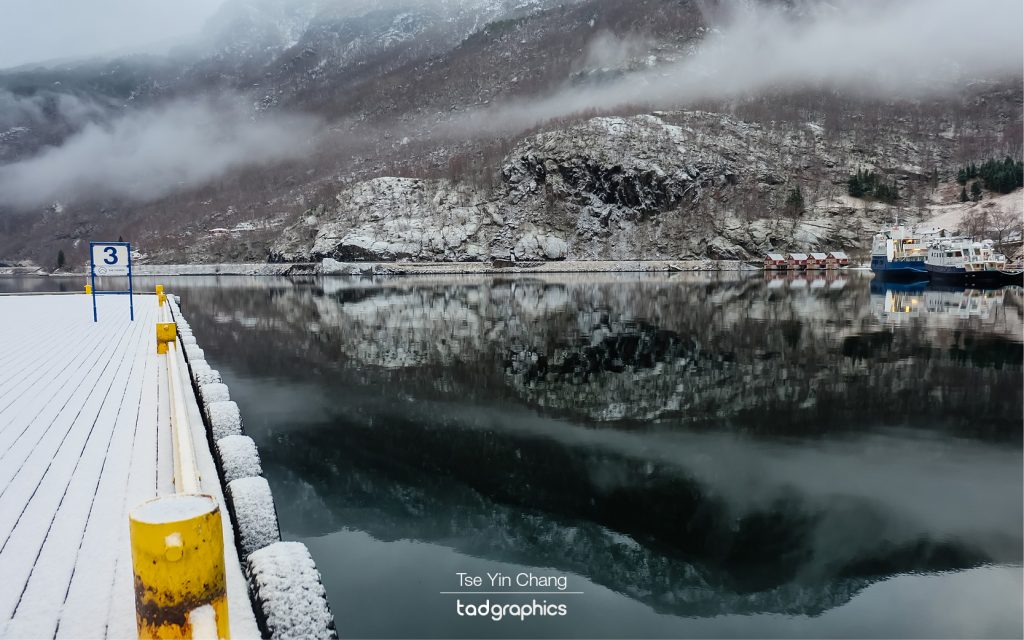
We spent the morning walking around the valley, including a short return stroll to the next settlement – Lunden. In the afternoon we boarded our boat, and set off on a cruise of the fjords. Rather than retrace our steps from Myrdal to Bergen on the Bergansbanen train, we took the scenic route and headed into the network of fjords and then to Gudvangen where we would be taken by bus to meet the train.

Norway is of course famous for its fjords; water filled valleys, that snake like fingers through the mountains and out to sea. As they do this, they connect up to each other and create a complicated network. The Aurlandsfjord runs north from Flåm to meet the Nærøyfjord – a world heritage listed site and the narrowest fjord in Europe. Being enclosed so tightly by the cliff-like walls makes them even more imposing and dramatic. And to make it that bit more picturesque, the sides of the fjord were punctuated by mighty waterfalls and small farms clinging on to the cliffs at impossible angles.

The Nærøyfjord is itself one arm of the Sognefjord, and we reached this wider waterway in good time. We met our bus at Gudvangen, and were taken to the town of Voss to re-join the Bergen train line. It was snowing by this point, which meant our bus couldn’t take the Stalheimskleiva – Northern Europe’s steepest road. We were however still treated to some incredible landscapes on our bus journey to the train, which included negotiating a thrilling succession of thirteen hairpin bends! Something made even more hair-raising in such a big bus.
At Voss we boarded the train, and relaxed for the last part of the journey to Bergen. It gave us an opportunity to reminisce over our adventures to date, and contemplate what was to come next.

Prints from my Norway photo collection are available in a variety of different sizes and framing options. Please get in touch to find out more.
See also:
Scenic Bergensbanen, the Bergen Railway
The Flåm Railway and Flåm
